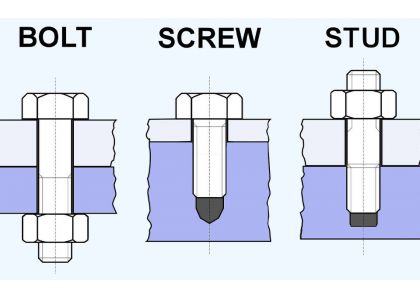
I. What are studs and bolts respectively?
Studs are a type of threaded connection component. They have threads on one end and a cylindrical shape on the other. Studs are typically used as load-bearing bearings and for axial force transmission, and are also often used in assembling mechanical structures, reinforced concrete structures, and construction fields.
Bolts are also a type of threaded connection component. One end of a bolt has threads, and the other end has a head, which is usually square or hexagonal. Bolts are mostly used for connecting components with movable capabilities, such as machines and equipment.
II. What are the differences between studs and bolts?
1. Shape
The end of a stud is cylindrical and has no head. While the end of a bolt has a head and has diverse shapes, which can serve multiple functions such as positioning, connection, and force transmission.
2. Usage
Studs are used to bear loads and transmit axial forces, while bolts are generally used to connect components with movable capabilities, such as machines and equipment, and need to bear the pulling force during movement and assembly. Additionally, different shaped nuts, washers, and other threaded connection accessories can be selected as needed.
3. Process
Studs usually require the addition of a nut and washer at the end close to the end of the stud, which is called the self-manufacturing processing of studs. This process requires on-site manufacturing and has relatively strict processing conditions and high processing difficulty. Bolts, on the other hand, can be installed directly in the finished state and do not require self-manufacturing processing or other operations.
III. What are the applicable scenarios for studs and bolts?
Due to the differences in usage and shape of studs and bolts, their respective applicable scenarios are also different. Generally speaking, studs are suitable for bearing axial loads, such as direct transmission of components like transmission rods, and are also suitable for some accessory connection applications. Bolts are suitable for connecting mechanical structures that need to be frequently disassembled, replaced, or have movable capabilities, such as hubs, bearings, mufflers, fans, etc.